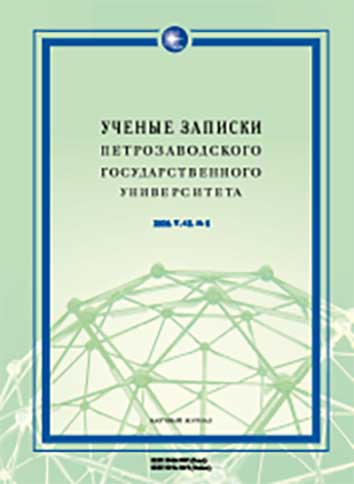КЫЛТОВСКАЯ ОБИТЕЛЬ: ОТ ЖЕНСКОГО МОНАСТЫРЯ
К ДЕТСКОМУ ГОРОДКУ ДЛЯ БЕСПРИЗОРНЫХ
KYLTOVO MONASTERY: FROM A NUNNERY TO A FACILITY FOR HOMELESS JUVENILES
Author(s): Vladimir N. BublichenkoSubject(s): History of ideas, Local History / Microhistory, Social history, Recent History (1900 till today), Politics and religion, Politics and society, Sociology of Religion
Published by: Петрозаводский государственный университет
Keywords: Kyltovo Monastery; secularization; confessional policy; Komi autonomous region; homelessness; neglect; social sphere;
Summary/Abstract: Church-state relations of the Soviet period are among relevant topics of historical science. The article is the first of its kind to study the process of nationalizing monastic property in the context of combating the homelessness and neglect of minors. The author analyzes the synodal period in the development of Kyltovo Monastery and its functioning as a social and legal institution during the first decade of the Soviet state after it was turned into a facility for homelessness juveniles. The aim of the article is to characterize the process of Kyltovo Monastery secularization during the struggle with homelessness in the European North of Russia. The research mainly used the historical-descriptive and historicalcomparative methods, and was based on the principle of historicism. The source database was comprised of archival documents from the National Archive of the Komi Republic. Kyltovo Holy Cross Monastery was one of the spiritual centers of the Veliky Ustyug diocese. The monastery was founded as a nunnery under the patronage of Afanasiy Bulychev, the owner of the Seregovo salt processing plant. The nuns were engaged in the religious socialization of the Zyryan population. The monastery generated its income from donations, economic activity, and capitalization of property. After the establishment of the Soviet state, the secularization of Kyltovo Monastery began. The first stage was the seizure of its land and financial resources. The monastery community was reorganized into an agricultural artel. The second stage of nationalization was characterized by the confiscation of church property. Kiltovo Monastery was closed and turned into a facility for homeless juveniles. The use of real property by this social and legal institution was based on interdepartmental lease relations. The secularization of the Kiltovo Monastery was a result of the atheist orientation of Soviet church-state relations. The nationalization of monastic property helped to solve a socially significant problem – eliminate the homelessness and neglect of minors.
Journal: Ученые записки Петрозаводского государственного университета
- Issue Year: 42/2020
- Issue No: 6
- Page Range: 70-76
- Page Count: 7
- Language: Russian

